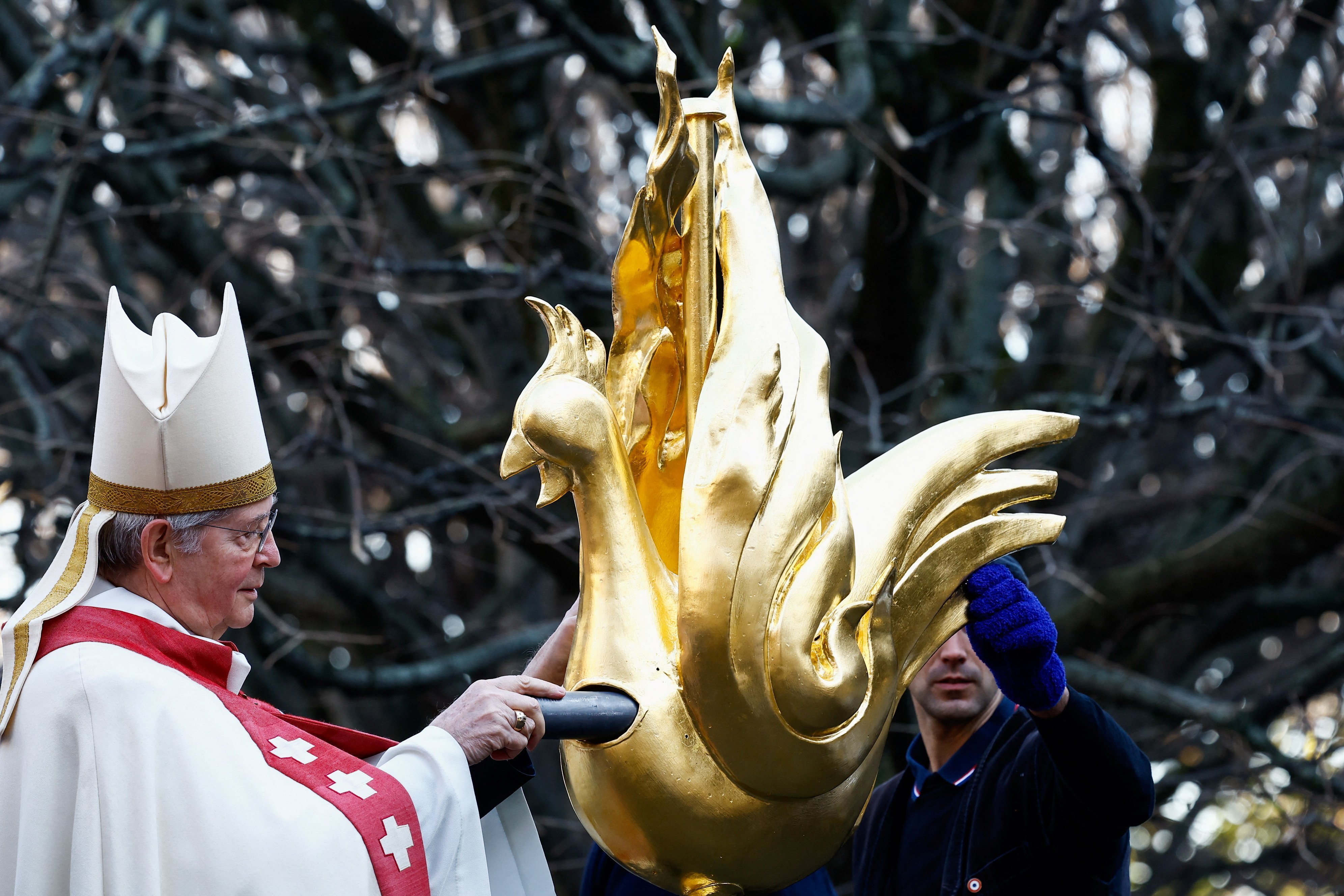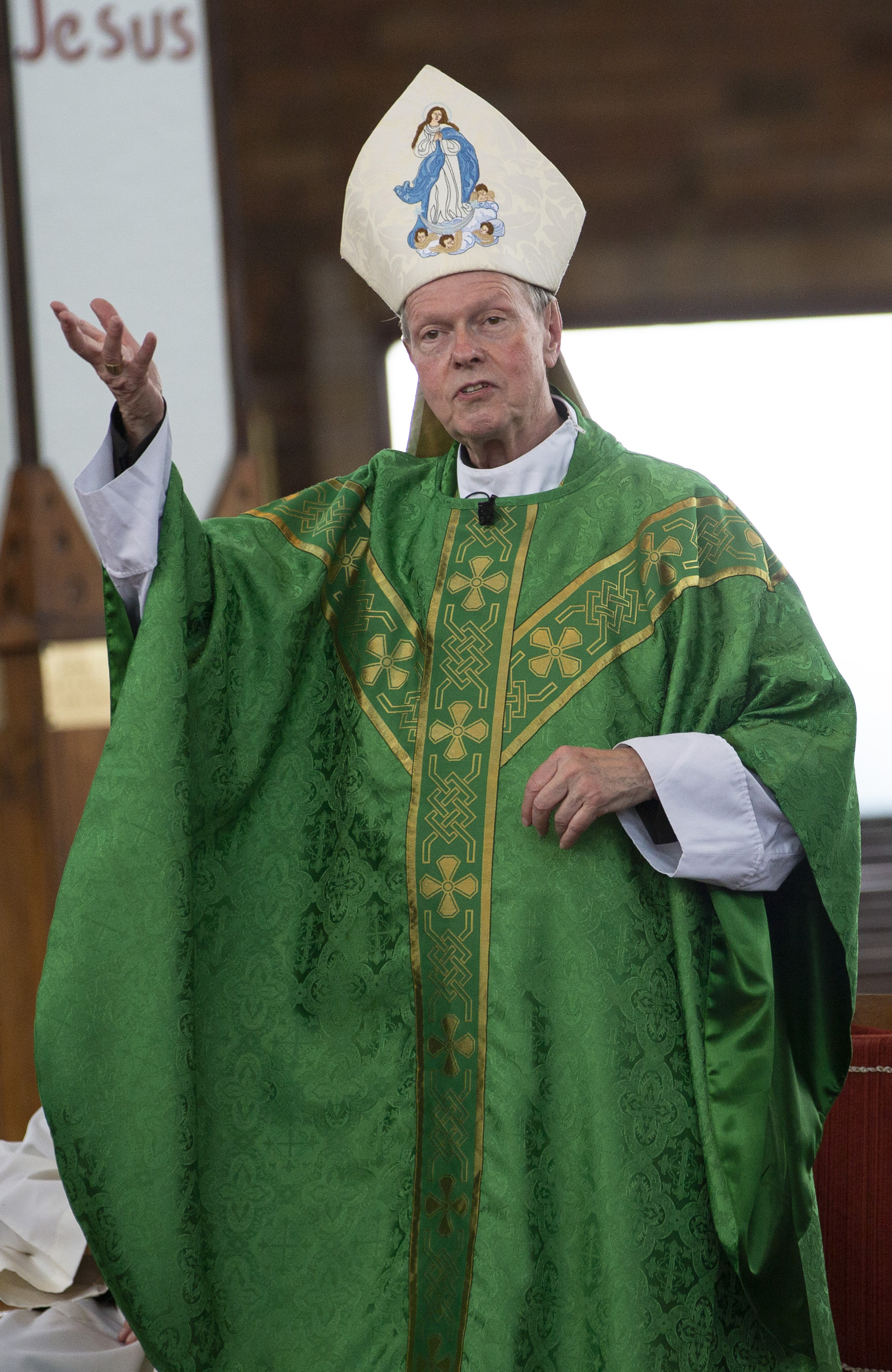December 4, 2024 at 10:16 a.m.
INFERNO TURNED MIRACLE
PARIS -- In 2017, The New York Times reported that Notre Dame Cathedral was in dire need of a makeover. Weather and time had taken a toll on the edifice. Broken gargoyles were replaced by plastic and limestone crumbled at the touch, with a renovation expected to exceed $180 million.
The interest in saving it from misery, however, was minimal.
Little did anyone know that two years later, the icon of Paris would be burning, with shocked Parisians flocking to the streets on April 15, 2019, praying for their heroic firefighters -- one of the best fire brigades in the world -- trying to save the soul of the city. Millions of people all over the world were glued to their television screens, many in tears.
Within hours after the fire was contained, donors pledged almost $1 billion to restore the Parisian icon to its former glory. But it has been a long and busy five years -- and a budget of $760 million -- that has led to the restoration of the beloved cathedral and its planned Dec. 8 reopening.
It was a Monday, 6:30 p.m. local Paris time, when stunned passersby looked on from Parisian bridges as the fire engulfed the spire and most of Notre Dame’s roof.
It was no ordinary Monday, however. It was Holy Week.
“Catholics should be commemorating Jesus’ crucifixion and resurrection in its pews at Holy Thursday, Good Friday and Easter Sunday services. Instead, a massive inferno is threatening to destroy the culturally and religiously significant icon for good,” USA Today wrote as Catholics and non-Catholics around the world held their breath.
The cathedral burned until the next morning, Tuesday, April 16.
Europeans woke up to a painful hole in place of the cathedral's spire and images of its devastated interior, with one heartbreaking picture going viral: ashes still smoking as sunbeams shone through the collapsed roof, spotlighting the rubble that used to be the main altar.
Paris’ fire brigade got the blaze under control, and the main structure -- including the bell towers and rose windows -- was saved. No one was injured, and the Catholic relics housed in the cathedral and priceless works of art were rescued.
Father Jean-Marc Fournier was a close witness to the moment the fire began to attack the north tower. As chaplain to the Paris fire department, he was on the scene, wearing his firefighting uniform and taking part in the massive operation with the 600 firefighters mobilized.
With the help of a team of colleagues, he had taken Jesus’ crown of thorns to safety -- a relic particularly dear to his heart, and one of Notre Dame’s most valuable treasures. As a member of the Equestrian Order of the Holy Sepulchre of Jerusalem, he felt an urgency to ensure its protection.

“After the crown of thorns, I helped save a number of works of art, paintings … and altar furnishings, and then I became concerned with the Blessed Sacrament,” Father Fournier told OSV News.
“There was the Blessed Sacrament in the tabernacle of the high altar, but it was absolutely impossible to reach it! There were blazing infernos on the floor in front, with tangles of beams burning, showers of flames and molten lead falling from the roof. It was a furnace,” he said.
“Surprisingly, the statue of the Virgin Mary of the Pillar was immaculate, unharmed in this glowing atmosphere,” Father Fournier pointed out.
There was a second reserve of consecrated hosts at the altar of St. George, one of the chapels around the choir, Father Fournier recalled. “There, on the contrary, there was a great silence, a great tranquility and an astonishing freshness. We found the keys, and I retrieved the Blessed Sacrament.”
“I then thought of blessing the cathedral with the Eucharist,” Father Fournier recounted.
“It was an act of faith. I asked Jesus, whom I believe to be truly present in the Blessed Sacrament, to fight the flames and preserve this building, which is like a jewel box dedicated to his mother,” he said.
The 40-foot metal cross, designed in the 19th century -- along with its spire -- by the architect restoring Notre Dame at the time, Eugène Viollet-le-Duc, is the only element of the choir roof to have survived the 2019 fire. It had fallen to the ground when the roof frame collapsed, but was not badly damaged.
Agnès Poirier, the Parisian author of “Notre Dame: The Soul of France,” told OSV News that “to think that Our Lady may completely disappear from our view and our lives was simply unimaginable. What was impossible for us to process was that with Notre Dame on fire, we were watching history burning. Our common history. Closely connected, of course, to the history of France, Notre Dame’s universalism however speaks to the whole of humanity.”
For its five years of reconstruction, Notre Dame was sealed off from the public, with tourists patiently viewing the front towers of the cathedral from wooden risers installed in front of it.
The risers are placed not far from the place where Philippe Villeneuve, Notre Dame’s chief architect, found the copper rooster, usually perched atop the spire, that was feared lost on April 15. However, at dawn on April 16, Villeneuve found the battered rooster lying in the gutter of Rue du Cloître-Notre-Dame, a street along the cathedral square. Relics of Paris’ patron, St. Genevieve, were found intact inside.
After five years of intense work and installation of a new rooster -- one he designed himself -- on top of the new spire, Villeneuve emphasized that this magnificent project was made possible by the international outpouring of generosity and donations that followed the fire.
“I would never have imagined that Notre Dame could have aroused such emotion throughout the world, during and after the fire,” he told OSV News. “It was astonishing.” Those involved in the reconstruction emphasize that many American donors generously supported Notre Dame’s rebuilding.
“Notre Dame shows France’s influence in the world, and its extraordinary heritage,” he said. “But the fire was not just a national issue. Notre Dame is also a (UNESCO) World Heritage site, and during the fire, we really felt that it was humanity that was seeing its heritage disappear.”
Vileneuve said every person working in the reconstruction had a symbolic task of passing on their knowledge and work for future generations.
Highly skilled carpenters from four different companies were working together to rebuild the spire before the December reopening -- with the new construction, identical to the destroyed one, unveiled in March. Workers were chosen from companies that followed a strict ethical code and were skilled in sacred art restoration.
“What has moved me so much over the years is precisely the joy that has animated all those involved in the project since the day after the fire,” Archbishop Laurent Ulrich of Paris told OSV News.
“All the trades worked together, craftsmen, artists … believers and nonbelievers alike. Competing companies joined forces. ... Nowadays, every time I visit the site, or meet those working on the liturgical furniture, sound and lighting, I witness this joy,” he said.
Architect Villeneuve, like hundreds of professionals working on the cathedral’s reconstruction, didn’t treat the cathedral’s reconstruction merely as a work project. In a conversation with OSV News, he described the cathedral as if it were a human being.
“I would like to give people something that will touch them,” he said. “I would like to help Notre Dame Cathedral speak to people, as best as it can.”
Notre Dame’s reopening will include “six months of celebration and praise,” Archbishop Ulrich said in a Feb. 2 pastoral letter.
The archbishop announced that “this celebration of the reopening of Notre Dame deserves an octave: from Dec. 8 to 15, every day, we will have a solemn celebration with a particular theme.” But the festive “reopening” time will last until June 8, when Pentecost falls in 2025.
That way, the archbishop said, “many will be able to say: ‘I was at the reopening!’ ”
“It must in fact be taken into account that the number of seats in the cathedral is not very large: Notre Dame is certainly not the largest church in Paris!” Archbishop Ulrich said.
At the end of November, a procession took place in the streets of the French capital to return the statue of the Virgin Mary to the cathedral.
Throughout the restoration period, it was housed in the church of Saint-Germain l’Auxerrois, directly across the street from the Louvre Palace. The sculpture, called the Virgin of the Pillar or the Virgin of Paris, dates to the mid-14th century.
The reopening celebration will begin Dec. 7, with representatives of the French state, which owns the cathedral, officially handing Notre Dame over to the archbishop of Paris -- “the assignee which is the Catholic Church” -- the letter said. The event will include the “awakening of the organ,” restored since the fire, followed by a “liturgical celebration with blessing, a Magnificat or a ‘Te Deum,’ then vespers.”
The first Mass will be celebrated in Notre Dame on Sunday, Dec. 8, the day when the new altar will be consecrated, highlighting the celebrative week. The bronze altar, with a flared shape reminiscent of a cup, was designed by Guillaume Bardet. Based south of Lyon, Bardet was chosen from among 70 candidates vying for the project. He also is in charge of the other pieces of furniture, baptistery, ambo, pulpit and tabernacle.
The feast of the Immaculate Conception will be celebrated in the reopened cathedral on Dec. 9, a day later than the actual feast. “We will have the joy of celebrating the Immaculate Conception, which the liturgy celebrates this year on Dec. 9, due to the Second Sunday of Advent,” the archbishop wrote.
“My very deep desire is to be able to welcome visitors,” the cathedral’s rector-archpriest, Father Olivier Ribadeau Dumas, told OSV News. “Notre Dame is a place of worship that welcomes 15 million people every year. As a priest, I seek above all to enable these people to encounter Christ. This can be done through the witness of faith that is the Masses celebrated as visitors continue their tour of the cathedral.”
He added: “I would like this reopening to be the occasion of a spiritual awakening for France.”
Archbishop Ulrich told OSV News that "”Like the Mother of God, the cathedral is not the Light, but it reflects the Light; it is a peaceful and sure sign that the Lord is here, in our lives, that he is present in our world and that he comes to meet each person along the way.”
MORE NEWS STORIES
- Pope offers prayers after shipwreck of migrant boat off Yemen
- Peace, disarmament begin in the heart, says Archbishop Broglio
- Catholic MBA programs see business as force for good, blending doctrine, commerce
- Trump administration moves to reinstate VA health policy fully excluding abortion
- Mass celebrated at ‘Alligator Alcatraz’ for detained Catholic migrants
- Lebanese Catholic clergy commemorate Beirut port explosion victims five years later
- Nagasaki Franciscan monastery that survived atomic blast still stands as messenger of peace
- Pope Leo stands with youth in Gaza, Ukraine, calls for dialogue, not war
- Don’t settle for less; God is waiting to transform your life, pope tells youth
- The three questions young people asked Pope Leo XIV — and his answers











Comments:
You must login to comment.